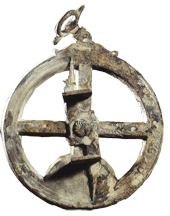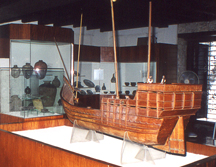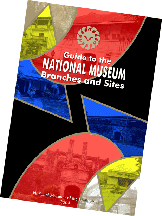FORT SAN PEDRO BRANCH MUSEUM

Brief History
This branch museum in the country’s oldest city, Cebu, is situated in the bastion of Fort San Pedro near the city port.
When the Spaniards arrived in Cebu, there was already a developed trading port for local and international goods. Ships from China, Japan, Indonesia and the Arab world arrived regularly at Cebu’s anchorage. Ferdinand Magellan, the Portuguese navigator who undertook the first expedition around the world and died in the Philippines, set foot on the island on April 8, 1521. When the Spanish colonizer Miguel Lopez de Legazpi arrived in Cebu in 1565, it was in this island that he established the first Spanish settlement in the country and constructed his first church. He named the settlement “Villa de San Miguel” (now Fort San Pedro) which served as a base of operations in the Philippines for four years until he moved to Manila in 1569. Fort San Pedro, where the museum is, is by itself a historical landmark being one of the old fortresses in the country. It was built in the early 1700 against the attacks of Muslim pirates.
Through a Memorandum of Agreement, the office building formerly occupied by the Department of Tourism (DOT) and the Philippine Tourism Authority was leased to the National Museum for a period of ten years. It was refurbished through a financial grant from the Spanish Government under the aegis of Agencia Española Cooperacion International (AECI). On April 23, 1994, the Museum was inaugurated with DOT Undersecretary Evelyn Pantig, National Museum Director Gabriel S. Casal and diplomats from the Spanish government headed by then Spanish Ambassador to the Philippines Herminio Morales gracing the occasion.

Location
National Museum, Fort San Pedro Branch, Fort San Pedro, Cebu City
Region VII
Category/Type of Museum: Archaeological
Collections
Artifacts from archaeological sites in Cebu Province
Relics and artifacts of the San Diego Galleon: earthenware vessels with complex forms and unusual designs, porcelain, bronze cannons
Photo-exhibit of diggings in Fort San Pedro
Diorama showing retrieval of items from the San Diego wreck through underwater archaeology
Mariner’s astrolabe (replica)

San Diego (wooden model)
Highlights of Exhibition
Highlights of Exhibition
Model of San Diego
The Spanish ‘San Diego’ was built in Cebu under the supervision of European boat builders as a merchant ship. It was originally named San Antonio de Cebu. It was docked at the port of Cavite for reconditioning and repair when the Vice-Governor General of the Philippines, Don Antonio de Morga, ordered its conversion into a warship and renamed it San Diego. The boat sank on December 14, 1600 off Fortune Island in Nasugbu, Batangas.
The Mariners’ astrolabe is a navigational instrument used before the sextant was invented. It calculates the ship’s position with respect to the latitude and longitude of the globe. It is frequently called a ‘sea ring’ and is marked off in degrees with a movable metal rule across the center. The original astrolabe, found in the San Diego wreck site, is displayed at the Museum of the Filipino People in Manila and is said to be one of the two pieces in the world.

Location, Museum Hours & Contact No.
National Museum, Fort San Pedro Branch, Fort San Pedro, Cebu CityBy air. There are around 15 daily flights from Manila to Cebu and these only take one hour. Regular flights are also available to and from Davao, Zamboanga, Iloilo, Bacolod, and a number of destinations in Mindanao.
By sea. WG & A and Negros Navigation regularly provide ferry connections to and from Manila. Other boats travel to and from various destinations in Mindanao and surrounding islands.
Mondays-Fridays / 9:00 am - 4:00 pm;
Saturdays, Sundays and holidays by appointment
Contact No.
ASBMD, National Museum Central Office; 527-4192
taken from the



